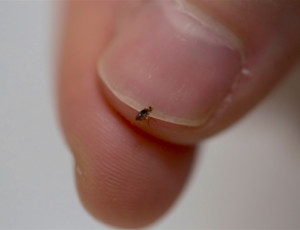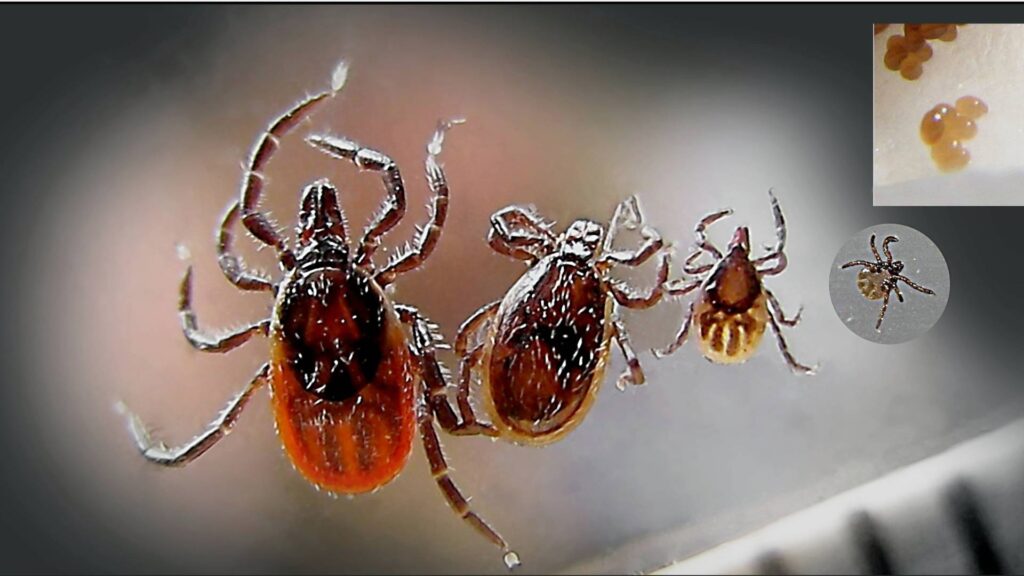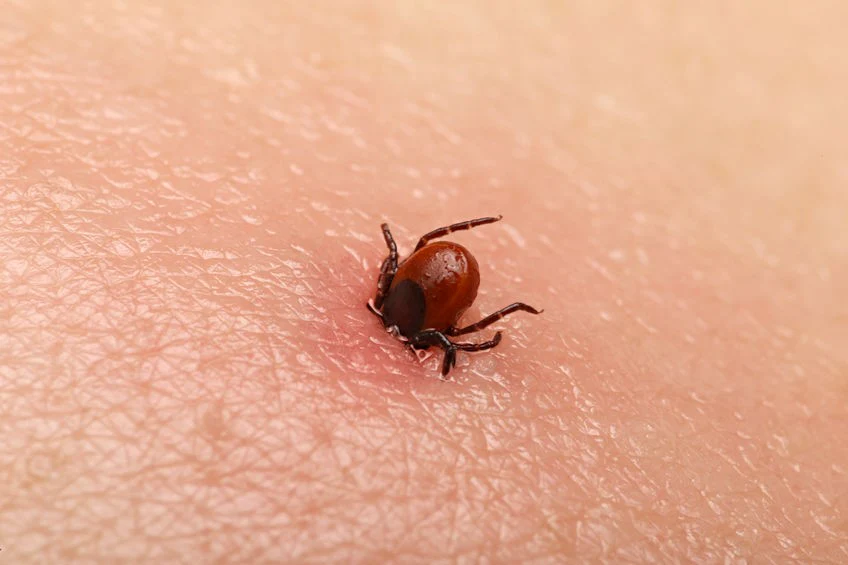Tick Treatments in Florida
Exterminator Services for Hialeah, Hollywood, Opa Locka, Hallandale, Dania, and Pembroke Pines
Florida’s subtropical climate—marked by year-round warm temperatures, frequent humidity, and mild winters—makes the state a haven for ticks. These tiny, blood-feeding arachnids inhabit grassy lawns, leafy debris, and shaded yard spots, waiting for unsuspecting hosts like pets or people to pass by. In densely developed or highly trafficked areas such as Hialeah, Hollywood, Opa Locka, Hallandale, Dania, and Pembroke Pines, ticks can easily latch on when dogs roam outside or wildlife crosses through yards. This service page explores why ticks flourish in Florida, how to recognize a potential infestation, and why contacting a professional tick exterminator is crucial for lasting, dependable relief. By leveraging integrated approaches that address ticks in every life stage, property owners can reclaim both indoor and outdoor spaces from these persistent pests.
Why Ticks Flourish in Florida

1. Warm, Subtropical Weather
Ticks remain active in temperatures above roughly 50°F. Florida’s consistently warm climate, even in winter months, means ticks can feed, breed, and mature all year. Brief cold snaps rarely last long enough to reduce their populations significantly, allowing multiple generations to thrive without a seasonal die-off.
2. High Humidity
Ticks lay eggs and develop best in moist, shaded environments, such as under shrubs or in leaf litter. Florida’s humidity, bolstered by frequent rain, prevents eggs and nymphs from drying out. Combined with well-irrigated lawns or dense greenery, these damp spots become prime nesting zones for ticks looking to establish a foothold.
3. Numerous Host Animals
From pets like dogs and cats to urban wildlife such as raccoons, squirrels, or stray animals, Florida offers ticks a steady stream of warm-blooded hosts. In suburban cities, these hosts often roam between yards, inadvertently distributing ticks that drop off in new locations ready to attach to the next animal or person.
4. Outdoor-Friendly Lifestyles
People in areas like Hollywood or Hallandale enjoy ample time outside—walking pets, gardening, or visiting parks. Ticks lurk in grass or shrubbery, clinging to clothing or fur when brushed against. With year-round outdoor activities, the chance of bringing ticks indoors rises if cautionary measures aren’t observed.
Telltale Signs of Ticks
1. Persistent Pet Scratching or Biting
One of the earliest and most visible indicators is a dog or cat that becomes restless, scratching repeatedly around the ears, neck, belly, or hindquarters. Ticks attach in spots where pets may not easily groom themselves. Excessive irritation or red bumps may warrant a closer look for small, dark insects latched onto the skin.
2. Ticks on Fur, Furniture, or Floors
In heavier infestations, you might see ticks crawling on your pet’s bedding, on hardwood floors, or near baseboards. Adult ticks vary from the size of a sesame seed to a small pea (when engorged with blood), dark brown to grayish-black in color. Spotting them signals a well-established presence—both indoors and out.
3. Bites on Ankles or Legs
Ticks can also bite humans, especially around the ankles or calves if they’ve crawled up from the floor. Their bites often appear as small, red, itchy bumps. In some cases, a tick remains attached, requiring careful removal with tweezers to minimize disease risk.
4. Pet Fatigue or Sudden Illness
Heavy tick burdens sap energy from animals, sometimes causing anemia in smaller or older pets. Tick-borne illnesses—like ehrlichiosis or anaplasmosis—may exhibit with fever, joint pain, or listlessness. If your veterinarian notes such infections, it’s crucial to address potential tick populations at home promptly.
5. Eggs in Yard or Shaded Spots
Tick eggs can form in clusters along moist soil, thick grass, or under leaf piles. Though they’re often too small to see easily, identifying them confirms that ticks lay eggs nearby, perpetuating the life cycle. Timely yard maintenance or pest management disrupts these breeding sites.
Risks of Ignoring Ticks
1. Disease Transmission
Ticks can carry various pathogens, including Lyme disease (less common in Florida but possible), Rocky Mountain spotted fever, or ehrlichiosis. Continuous exposure to ticks heightens the chance of contracting these illnesses for both humans and pets.
2. Repeated Bites and Irritation
Without removing established ticks and addressing eggs, adults continually reemerge. Households endure multiple bites or discover ticks latched onto pets, forcing ongoing stress. Eliminating fleas or other pests won’t solve a tick-specific problem—these parasites need targeted intervention.
3. Pet Health Complications
Heavily infested pets scratch persistently, risking open sores or secondary infections. If tick-borne diseases advance, pets may require antibiotics, supportive care, or hospitalization, driving up vet costs. Immediate property-wide flea and tick treatments can prevent such scenarios.
4. Spread to Neighbors
When ticks breed in one yard, they can easily ride wildlife or pets into adjacent properties, causing broader community issues. A single neglected infestation might lead to entire streets or complexes seeing recurring tick surges unless owners cooperate or act quickly.
5. Reluctance to Enjoy Outdoors
Fearing bites or disease, families may avoid yards, patios, or local parks known for heavy tick presence. This reluctance undermines Florida’s outdoor lifestyle—particularly in scenic areas like Dania or Pembroke Pines—if ticks remain unaddressed.

Why a Professional Exterminator Is Crucial
1. Thorough Inspection of Indoor and Outdoor Spaces
A trained tick exterminator analyzes both floors, carpets, and pet resting spots indoors, and also yard edges, shrub bases, or other shady zones outdoors. This full assessment ensures they target every life stage: eggs, larvae, nymphs, and adults.
2. Multi-Layered Treatment
Killing visible adult ticks alone doesn’t solve the entire problem. Professionals use insect growth regulators that halt ticks’ maturation, plus adulticides. This disrupts new generations from appearing. Pairing yard treatments with indoor sprays or dust fosters comprehensive elimination.
3. Safe Application of Products
Over-the-counter pesticides can be misused or endanger occupants. Licensed exterminators balance efficacy and safety, placing products carefully in crack-and-crevice areas, along baseboards, or under pet bedding. They instruct on reentry timelines, so families and pets stay safe.
4. Pet Care Coordination
Because ticks often feed on dogs or cats, exterminators encourage owners to consult veterinarians about tick preventives, shampoos, or collars. This integrated approach eliminates parasites from the property and the pets simultaneously, preventing re-infestation.
5. Follow-Up and Monitoring
Tick eggs may hatch weeks post-treatment. Exterminators often recommend re-checks or occupant vigilance—like vacuuming frequently. If newly hatched ticks appear, a second round of treatments addresses them quickly, preventing a resurgence.
Typical Methods for Tick Treatments
1. Inspection and Site Prep
Before applying products, the exterminator combs through pet bedding, furniture seams, and carpets for signs of flea or tick activity. Outdoors, they locate damp, shady spots near vegetation. They may suggest vacuuming floors or clearing yard debris, enabling insecticides to penetrate effectively.
2. Indoor Sprays with Growth Regulators
An integrated approach uses adulticides to kill current ticks on contact and insect growth regulators (IGRs) to prevent eggs or larvae from maturing. Technicians focus on baseboards, carpet edges, or under furniture. Occupants usually leave rooms briefly to allow drying.
3. Yard Treatments
Sprays or granular insecticides target the yard’s perimeter, shady lawn edges, or damp corners. By minimizing the outdoor tick population, owners reduce the risk of new ticks riding pets or humans indoors. Regular mowing and leaf-litter removal complement these treatments.
4. Vacuuming and Steam
Vacuuming carpets or rugs daily collects leftover eggs or nymphs. In some cases, steam cleaning also kills ticks on contact, especially when used on upholstered furniture or pet bedding. Occupants should dispose of vacuum contents outside to keep ticks from escaping back indoors.
5. Collaboration with Vet Recommendations
Since cats and dogs are primary tick carriers, an exterminator’s plan typically includes reminders to apply veterinarian-approved tick preventives. Ongoing use of topicals, oral medications, or collars drastically reduces future indoor tick transport.
Service Areas
Hialeah
As one of South Florida’s largest cities, Hialeah’s dense neighborhoods and multifamily properties give ticks multiple points of entry via shared corridors or yard spaces. Prompt exterminator involvement keeps infestations under control, ensuring families remain free from repeated bites.
Hollywood
A tourist destination featuring beaches and outdoor dining, Hollywood sees constant foot traffic—potentially tracking in ticks. Businesses and residences seek thorough tick solutions to maintain comfort and health standards for both visitors and locals.
Opa Locka
Known for distinctive architecture, Opa Locka’s older buildings or cluttered yards can inadvertently shelter ticks. Integrating yard treatments, occupant vacuum routines, and monthly pet prophylactics prevents repeated cycles of adult ticks or newly hatched nymphs.
Hallandale
Situated close to major entertainment hubs, Hallandale supports a mix of condos, hotels, and family homes. Tick infestations can easily hinder enjoyment of Florida’s weather if residents or tourists battle bites. Professional exterminator steps eradicate ticks swiftly while occupant synergy keeps them away.
Dania
Near Fort Lauderdale’s attractions and coastline, Dania fosters vibrant, pet-friendly communities. Tick activity often appears in yard corners, under decks, or near water sources. An integrated plan—spraying outdoors and applying IGR-based formulas indoors—keeps yard leisure free from crawling parasites.
Pembroke Pines
One of Florida’s largest suburban cities, Pembroke Pines features extensive green spaces and numerous pet owners. Ticks exploit these natural corridors, dropping off on lawns and eventually migrating indoors. Comprehensive exterminator treatments plus occupant diligence yield a comfortable, pest-free lifestyle.

Why Our Tick Treatments Excel
1. Expertise in Florida’s Climate
Years of controlling ticks in South Florida guide our approach, accounting for the region’s high humidity, mild winters, and busy residential patterns. We adapt proven strategies to city-specific scenarios—like heavy yard vegetation in Pembroke Pines or older, multi-unit buildings in Hialeah.
2. Detailed Assessment and Custom Solutions
We begin with a meticulous review of indoor and outdoor areas, identifying egg-laying spots or adult feeding zones. Our exterminator then chooses from insect growth regulators, adulticides, vacuum protocols, or yard modifications that best match each property’s layout and intensity of infestation.
3. Emphasis on Safety and Limited Disruption
By placing products along baseboards or yard perimeters, we minimize occupant exposure while ensuring ticks crossing these barriers succumb quickly. Any short reentry intervals are clearly communicated, so families and pets remain safe while we target fleas or ticks precisely.
4. Preventive Pet and Yard Advice
Our integrated approach addresses each stage of the tick life cycle. By coordinating with homeowners to keep pets on veterinarian-endorsed tick preventives, frequently laundering bedding, and trimming yards, we deliver more than a one-time fix—ensuring lasting protection.
5. Prompt and Thorough Follow-Ups
Ticks can reemerge if undiscovered eggs hatch after initial treatment. We offer or recommend follow-up checks, tackling new adult ticks if they appear. This vigilance cements the property’s tick-free status and lowers the chance of repeated aggravation or disease risk.
Next Steps
If your pets are constantly scratching, you’ve encountered ticks on floors or furniture, or noticed strange bites on ankles and legs, it’s time for action. Contact us to learn more or schedule your service. Early intervention prevents ticks from multiplying and reduces potential disease threats to families and pets alike.
Our tick treatments in Hialeah, Hollywood, Opa Locka, Hallandale, Dania, and Pembroke Pines blend thorough inspections, precise insecticide usage, and occupant cooperation for total coverage. By eradicating existing ticks and blocking future life stages, a professional exterminator frees your home or business from these relentless parasites, letting you embrace Florida’s outdoor pleasures without the burden of repeated bites or compromised health.
Maintaining a Tick-Free Environment
- Check Pets Regularly
Use a flea/tick comb, focusing on warm areas like behind ears, under legs, or the tail base. Immediately remove attached ticks with tweezers, cleaning the bite site to lower infection risks. - Vacuum and Launder
Frequent vacuuming of carpets, rugs, and pet bedding removes eggs or larvae. Dispose of vacuum contents outside in sealed plastic. Wash linens, blankets, and pet items on high-heat settings weekly. - Trim Grass and Shrubs
Ticks wait in tall grass or dense foliage. Mow your lawn short, clear debris piles, and trim shrubbery away from walls. Increased sunlight and reduced humidity hamper tick survival. - Address Moisture or Standing Water
Fix leaks, drain stagnant water, or check damp corners around AC units. By limiting moisture, you reduce insects and the comfortable environment ticks crave to lay eggs. - Prevent Wildlife Intrusions
Secure trash in lidded bins to deter raccoons or opossums that might carry ticks. Fencing or netting can discourage stray animals from wandering through yards at night. - Consult Vets for Pet Preventives
Topical or oral preventives keep ticks from embedding on cats and dogs. Regular check-ups ensure these medications remain effective, blocking ticks from hitching rides indoors on unsuspecting pets.
By blending these measures with specialized tick treatments whenever infestations arise, residents in Hialeah, Hollywood, Opa Locka, Hallandale, Dania, and Pembroke Pines secure their properties and defend their loved ones—both two- and four-legged—against the discomfort and dangers ticks pose. Florida’s subtropical conditions might favor robust tick populations, but with consistent vigilance and expert pest management, these insects can be contained, letting everyone enjoy the state’s warm climate without the nuisance and health risks of tick infestations.
